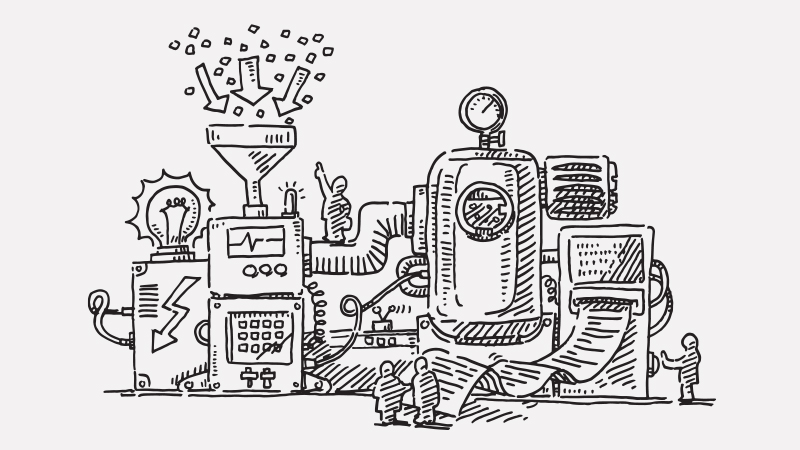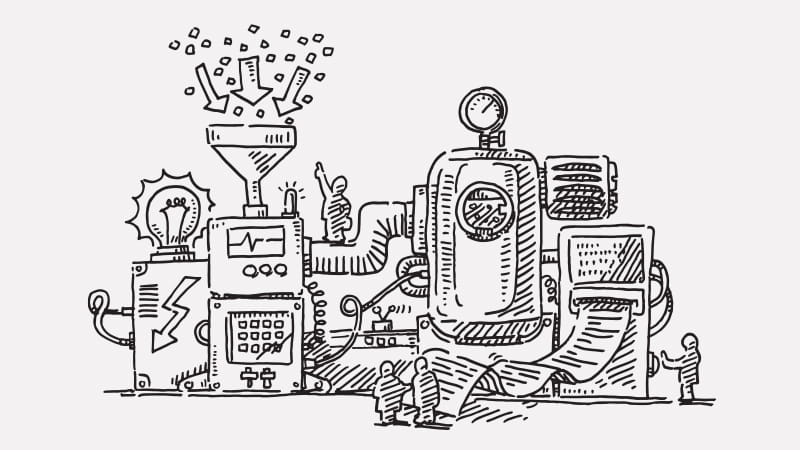Digital Convergence


For quite some time, computer speed was the most important visible parameter of IT-development, and for decades, High performance Computing (HPC) stood at the forefront of this. Computer speed benefitted from what used to be called Moore’s law – a statement that Gordon Moore published more than 50 years ago, observing that the speed of a processor would increase about every 12 months – later modified to 18 months.
Moore’s law is coming to an end within the next decade, and we are not going to see this kind of increase in speed in the future anymore. But computers today have already reached a level of performance, even in handheld devices, that makes them a powerful and ever-present tool in the hands of everyone.
BIOGRAPHY

However, AI would also be lost in data if it were not for the computing performance that HPC has made available over the last few decades. And, both AI and HPC would be lost if it had not been for the IoT revolution that found new ways to provide us with all the data needed for the decision-making process.
So, what we are facing is a revolution in IT triggered by what should be called 'digital convergence', with three technologies coming together that had previously mostly struggled with their own challenges. Each of the three has gone through its own development cycles, improving over time but staying in its narrow field of expertise. Today the three of them converge.
A New World of Applications
New opportunities open up as we start to understand that we have to bring together the bits and pieces to create something truly new and revolutionary. The problems to which digital convergence can be applied are manifold.
Simulation
Computer simulations allow for the optimization of processes and products. They do so by creating a digital twin of a product and then running virtual tests on it. So far, this is a human controlled process requiring human decisions about the correct parameters. The more parameter variations that are simulated, the more information the set of simulations can provide. Simulations, in turn, can be compared to data gained from real world experiments. However, simulation data sets are large and with many parameter variations, users start to get lost. Digital convergence can help make this situation much easier. Experimental data can be collected automatically and be easily integrated into simulation scenarios. AI can help to analyze simulated results, learn from them, and suggest optimum parameters to the end user.
Industry 4.0 / Factory of the Future
In the factory of the future, digital convergence plays an important role. All equipment, parts, tools, materials, processes, and people act as sources for data. This data has to be collated and analyzed, and then decisions have to be made as to how to proceed with production to meet customer requirements, as well as any other criteria within which the factory of the future has to operate. AI provides the necessary methodology to not only provide an analysis of the data, but also to learn from previous data and continuously improve the decision in the process. HPC provides the necessary computing power for both AI and simulations of the factory of the future, based on decisions made by AI-systems.
Political Decision Making
The political decision-making process heavily relies on correctness of data, ability to estimate the impact of decisions and the ability to match intended and actual outcomes. Based on IoT technologies, data relevant for the political decision making process can be accumulated, analyzed by AI and used as an input for HPC-based simulations to shape the future of a society. Data from all kinds of sources can then indicate whether the decision actually leads to the intended results. The impact of digital convergence on the political decision-making process can be seen in the current COVID-19 pandemic. Countries like Japan, South Korea, Singapore, Taiwan and China already rely on these technologies and are seeing excellent results in their handling of the pandemic.
